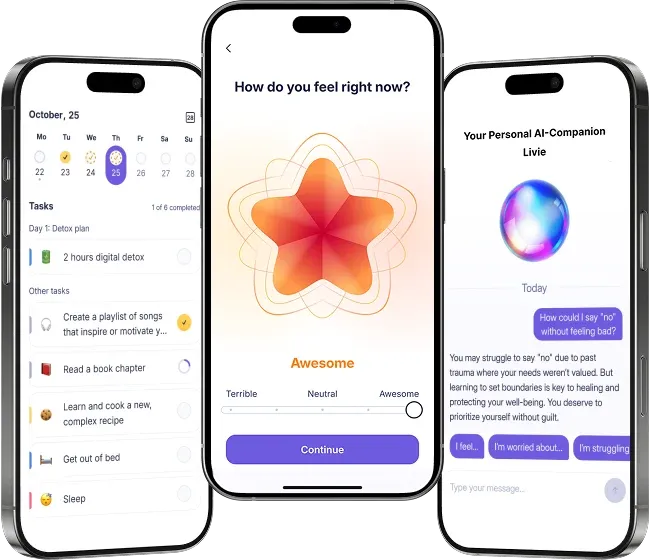Supporting ADHD Students in the Classroom

Today’s educational environment presents unique challenges for teachers seeking strategies to ensure all students feel included. As educators become more aware of the complexities of attention-deficit/hyperactivity disorder (ADHD), they face new demands that require more profound knowledge of strategies for creating an inclusive classroom. Let’s explore what methods teachers can use to narrow or even close the gap between kids with ADHD and their peers.
Understanding ADHD’s impact on classroom learning
Stereotypes regarding ADHD often emerge from the lack of knowledge of ADHD. The mechanisms in which ADHD and the classroom environment can interact can be difficult, impacting students’ learning.
- Difficulty paying attention. Due to the nature of Attention Deficit Hyperactivity Disorder, students have trouble maintaining a focus on a task or teacher’s words or remaining attentive when they have to understand the new material. This can be especially evident during multi-step instructions or when they have to switch from one task to another. From a long-term perspective, it can lead to poorer performance results and grades. However, attention can also be hyperfocused when a student is too engrossed in a task that interests them.
- Hyperactivity. Teachers might notice that students with ADHD struggle to sit still. It can be a response to the inner need for stimulation or a high anxiety level and is often not a reaction a person can notice or control. Typically, ADHD causes students to fidget, tap, play with their pens/pencils, or constantly look around. As a result, when they have to perform or remain unmoving in a structured environment, they might get frustrated or unfocused.
- Impulsivity. Because controlling one’s impulses might be complicated for learners with ADHD, they can face trouble restraining themselves when discussions happen. In this case, they might interrupt their peers or respond to questions faster than the teacher has finished talking. This can cause disciplinary actions and damage students’ reputations, resulting in further challenges.
- Emotional regulation. ADHD can also impact how kids manage frustration, stress, and anxiety, potentially leading to outbursts or withdrawal. As a result, kids might become angry or react adversely to external triggers to which other students might react more in line. Like impulsivity, it can have consequences with both grades or socialization, which we will cover below.
- Social connections. Unfortunately, learners with ADHD might face isolation and misunderstanding due to behaviors caused by their condition. They may feel apart from their peers, which, in turn, might lead to difficulty completing group projects or other activities that need at least neutral relationships with others.
Common classroom challenges for ADHD students
While this list is not conclusive by any means, below are the most common struggles that learners with ADHD encounter in the classroom:
- Difficulty staying focused.
- Time management issues.
- Challenges with organizing tasks and priorities.
- Restlessness.
- Forgetfulness about tasks or personal belongings due to issues with short-term memory and cognitive overload.
- Problems shifting from one task to another.
- Strained peer relationships.
- Emotional and mental frustrations.
This means that kids need specific ADHD strategies for learning and staying organized, catering to their personal needs based on the unique strong and weak features of every student with ADHD. Different people can have different manifestations of ADHD symptoms, with different combinations of such.

Key points for supporting ADHD students
Although the experiences of children with ADHD are difficult to replicate, teachers might imagine themselves in a room with extremely bright lights, loud noises from all directions, and intense temperature shifts — all while trying to focus. However, children often cannot leave the classroom when needed, unlike adults, who have more freedom due to their age. This is why creating a more accommodating environment for them is a fairer and more practical solution. Research shows that the learning environment affects both children with ADHD and their typically developing peers, so including changes in the classroom to minimize distractions is a generally beneficial choice.
As a teacher, consider implementing a range of organizational strategies, classroom adjustments, and behavioral management techniques.
Classroom environment arrangements
Here are some classroom strategies that you might employ as a teacher:
- Create flexible seating arrangements. Offer various options, from standing desks to soft seating, to accommodate different kids’ needs.
- Invest in a noise machine. Noise machines or even simpler, more affordable devices, such as sound systems or laptops with good sound quality, can create a distraction-free environment by masking background noise. For example, white noise can be used to help the whole class from distractions.
- Implement privacy dividers. While not all students will use them, they can provide relief for those who feel overwhelmed by attention or peer interactions.
Organizational strategies
Support your students’ adjustment and academic progress with these strategies:
- Giving instructions step by step. Simplify tasks by breaking them into smaller, manageable parts, making them easier to achieve. Offer detailed guidance if needed, and check for understanding by asking kids if they have grasped the assignment.
- Provide transitional breaks. Students with ADHD, as well as their peers, often become more active during transitions, so a 3-5 minute adjustment period between activities can be beneficial.
- Incorporate visual aids. Use visual aids like charts, diagrams, images and color code materials to complement verbal instruction, helping students with ADHD benefit from these materials.
- Establish classroom routines. Make the lessons predictable to at least some extent: it would greatly support children with ADHD as well as other kids who do not hold any mental health conditions. Classroom rules work well for teachers, too, making them feel safer in familiar environment.
Behavioral management approaches
Just as it’s vital to help your students handle stressful situations better, it’s useful to utilize behavioral methods to help them cope.
- Teach students grounding and emotion relief. ADHD can be especially challenging for those who lack effective coping skills. Teachers can offer students tips and training on managing their emotions, such as deep breathing exercises and grounding techniques.
- Provide backups for forgotten materials. If students often forget their supplies at home, set up a designated spot with extra pens and notebooks they can use when needed. It can support students’ independence since they can prepare for the lesson on time without getting more anxious.
- Include checklists. You can’t make a learner finish their task, but you can help them remember it. For example, create checklists for them with a list of things to do or items to take for the next lesson.
Below, we’ve included an example of a lesson template tailored for teaching students with ADHD.
Lesson template for students with ADHD
Lesson Title: Provide a title.
Objective: Identify a clear objective for your students, such as “By the end of this lesson, you’ll understand the main ideas of this novel.”
Materials needed: Include the list of materials that your students have to prepare before you dive into the lesson.
Introduction: Give a quick, engaging start and a visual to help your students focus. Here, you can also explain why this topic is important and the objective of your lesson.
Direct instruction: Here, you should explain the material using visual support and divide every topic into bite-sized ideas.
Guided practice: Offer a group activity — allow your students to choose how they want to practice the new information. Give them a choice of activities, which will make the process more inclusive. Ask questions and provide more details and explanations.
Short break: Give your students time to recuperate and refresh their focus — allow for a small physical activity such as stretching or walking around the class. Human body is very responsive to physical activity, so this might work just right.
Independent practice: Help your students to practice new information individually — if they struggle, provide assistance, though encourage them to try on their own.
Closure: Summarize the lesson’s critical points, explain homework assignments, and tell about the future topic.
Reflection: Engage your students in a short reflection on what was easy or difficult for them. It’ll encourage them to better understand their learning process.
While this template is just a suggestion, you can use it as a rough idea for better organizing your students’ efforts.
Don't forget to provide the positive feedback on the completed homework, pointing out what kids managed to do well, and deliver critisizm as smoothly as possible for them to establish a fine self esteem.
Classroom accommodations for ADHD students
There are different ways in which ADHD in the classroom can manifest — and we have already covered several techniques to handle that. However, educators might find it helpful to give their learners a few other means of support following IEPs and 504 Plans and based on equity principles.
- Giving extra time on assessments.
- Adapting teaching ADHD students to their needs.
- Providing detailed feedback and positive reinforcement with a clear structure of what was done well and what can be improved in the future.
- Offering alternative formats for assignments.
- Giving access to organizational tools and resources.

Teaching techniques to improve focus and engagement
Although we’ve covered a few strategies to improve students’ learning, let’s dive into ADHD strategies for teachers that can help learners be more engaged and concentrated.
Incorporate active learning
Movement can help take the edge off students’ energy and reframe it into something entirely else. Offering movement-based learning and diverse ADHD activities can help learners with ADHD express themselves better and not be confined by a strict structure. Additionally, “active” learning can encompass various approaches, including group discussions or hands-on projects.
Offer more choices
School structure can get stifling for those with ADHD — essentially depriving them of the ability to choose for themselves. Teachers might give several options to test students’ knowledge, such as making a comic strip or writing a summary, depending on their abilities or interests. It’s crucial to keep in mind that expertise isn’t measured in one way only.
Utilize storytelling techniques
Students are more likely to engage with material when they perceive it as relevant and enjoyable. Educators can add examples from real life to demonstrate how their lessons will be relevant. Alternatively, they might adopt a creative approach that encourages students to take on a character and solve a challenge in the class, which will give them confidence and more freedom. There’s science behind that: storytelling was found to have positive outcomes for students with ADHD and reinforcing productive behaviors.
Add gamification of classroom tasks
It’s all about keeping children entertained, and this method works for all ages. Gamification has proven effective in teaching valuable skills to students with ADHD and holds great promise for enhancing academic performance. Try “gifting” badges or a system of rewards that can bring different privileges or rewards for your students if they finish their assignments on time and/or work with their peers. It can motivate the entire class to get involved and can create a unique atmosphere in the classroom. Age can influence how you use gamification. For instance, younger students can use simple games and development-based activities, while older students can approach tasks that require them to learn responsibility and self-regulation.
Important: Games are frustrating when they are about competition because they rely on a win-lose scenario. Since it can be stressful for students with ADHD already, it’s best to avoid such situations. Try not to reinforce serious competition or comparisons among kids.
Offer multisensory learning opportunities
While it may be easier to rely solely on verbal instruction and a few visual aids, this approach can be unengaging for both educators and students. When teaching biology, physics, or chemistry, educators can offer 3D modeling or different experiments to bring positive associations among students. Because students often remember hands-on experiences better than textbook information, this can bring better excitement and interest in your subject.
These suggestions are meant to inspire and guide teachers as they explore more creative and useful strategies to gain their students’ interest. This approach is especially useful for ADHD students because they better remember information when their sensory perceptions are involved.
Addressing disruptive behavior
Even in well-behaved classes, disruptive student behavior can still occur. Reasons can vary from peer pressure or academic frustrations to family issues. When managing such occurrences, teachers should differentiate between willful misbehavior and ADHD-related responses. Often, students cannot control such reactions and are the first people to suffer from it.
Teachers should set clear expectations for their class, explain inappropriate behaviors, and suggest other coping strategies. For instance, rather than punishing a student for disruptive behavior, educators should offer a quiet space for them to calm down, ensuring they are not further overwhelmed. Whenever possible, involve parents and students in developing self-regulation strategies that target personal triggers and create individualized behavioral plans. If the issue is persistent, adding ADHD tutoring to help a child handle their emotions better might be a viable choice.
Building a positive student-teacher relationship
Given the unique dynamics between educators and students, nurturing trust is essential. However, because students with ADHD often get misunderstood or ignored, helping them feel safe and respected can be one of the keys to a successful long-term connection. When teachers learn more about their habits and behaviors, they understand how to help students with ADD.
This gap is significant: students with ADHD frequently report feeling less connected to their teachers than their typically developing peers, resulting in feelings of rejection and exclusion. Teachers should be ready to show empathy and patience when meeting and getting acquainted with their students — it might require time, but these efforts will lead to better engagement and classroom performance. Every student deserves individual attention; understanding their interests, triggers, and coping strategies will foster both academic and social growth.
Final thoughts
Educational institutions can learn and adapt to assist students with ADHD on their path toward improved schools. While teachers might need additional learning and awareness to remain connected with their students, their efforts will be helpful not just for those learners who have ADHD — they can bring positive shifts to the entire classroom. Even minor adjustments can make a big difference, creating a culture of support and inclusivity.

